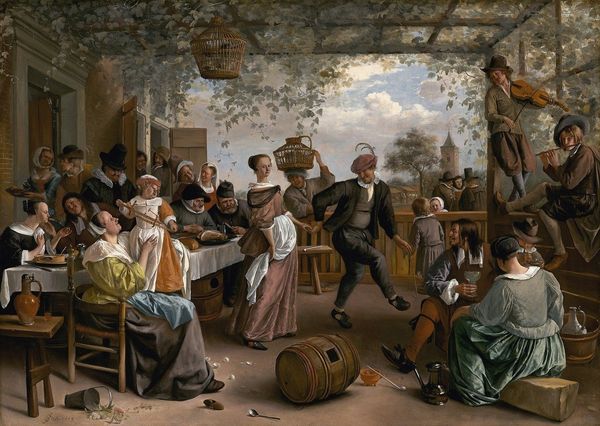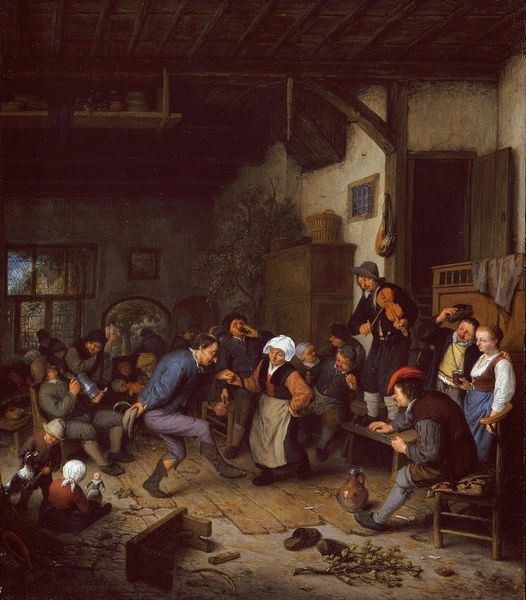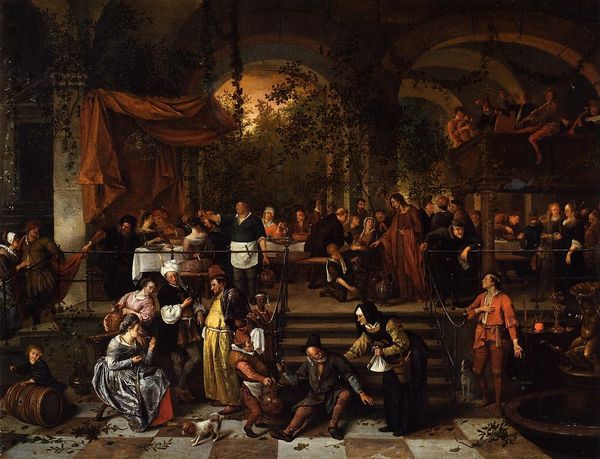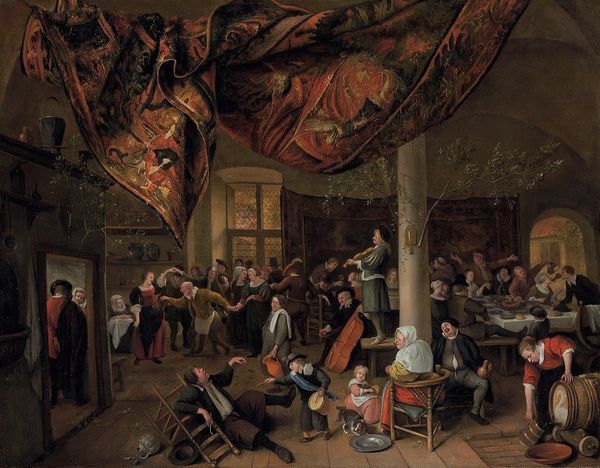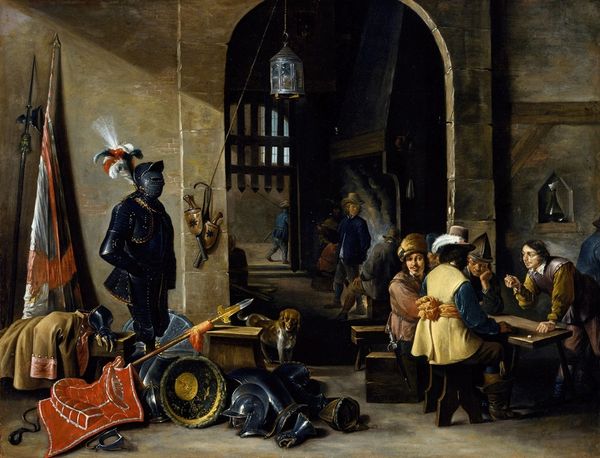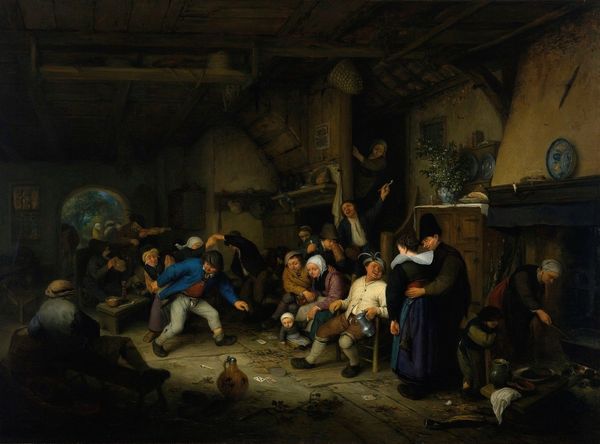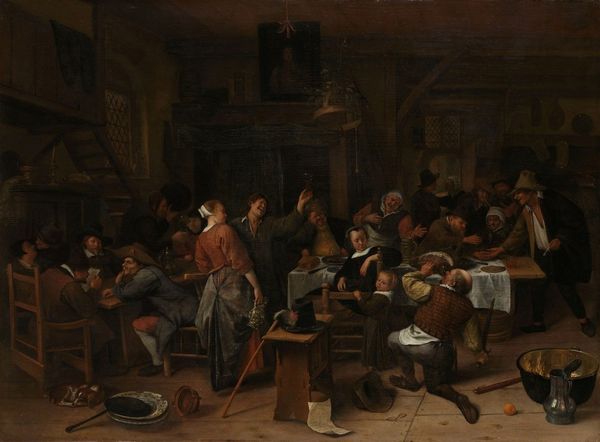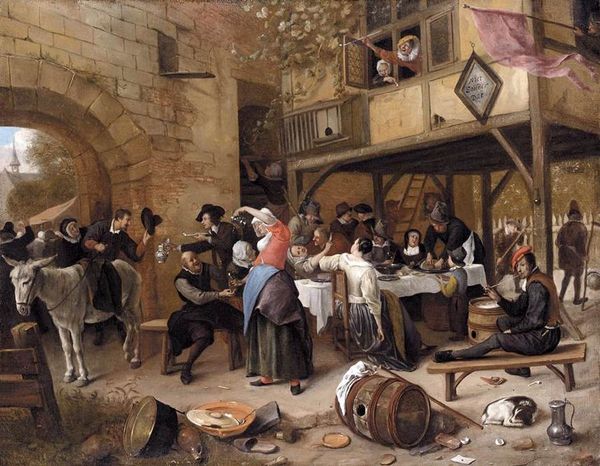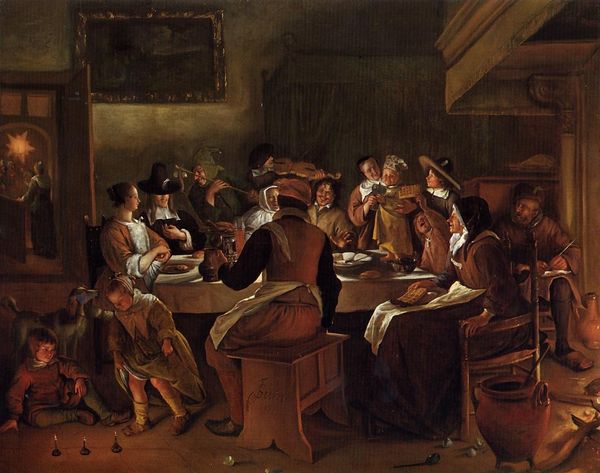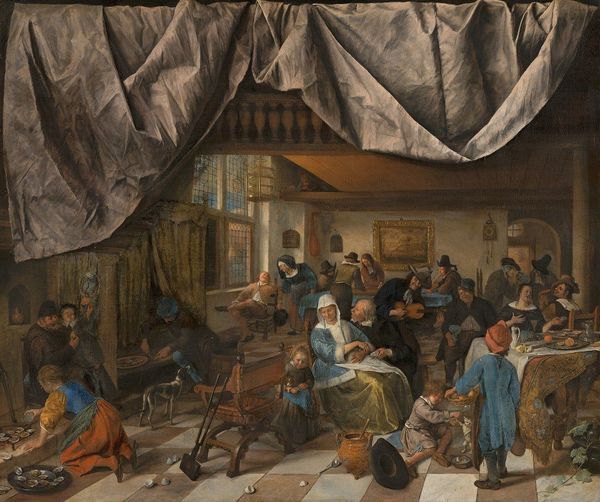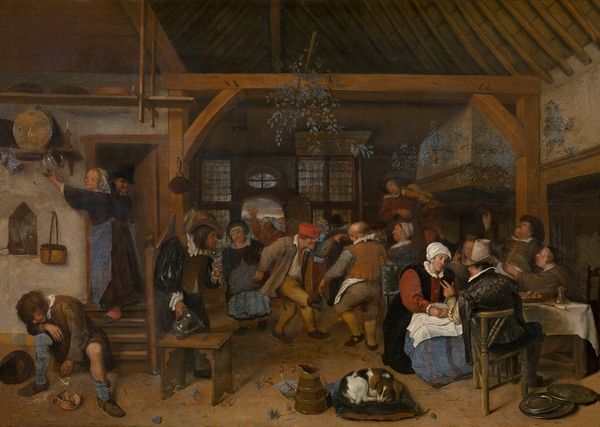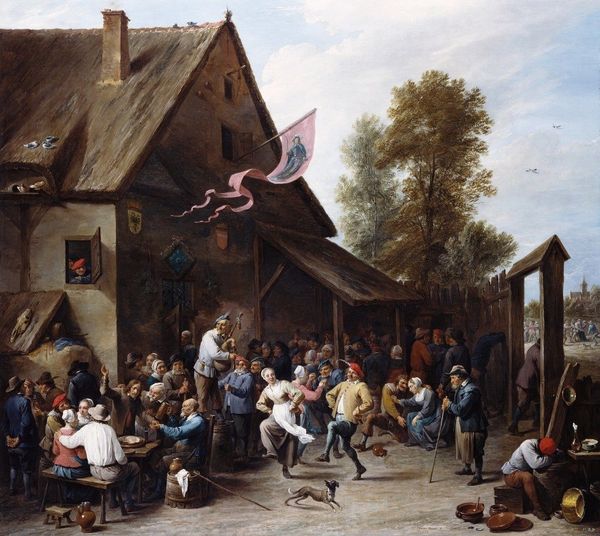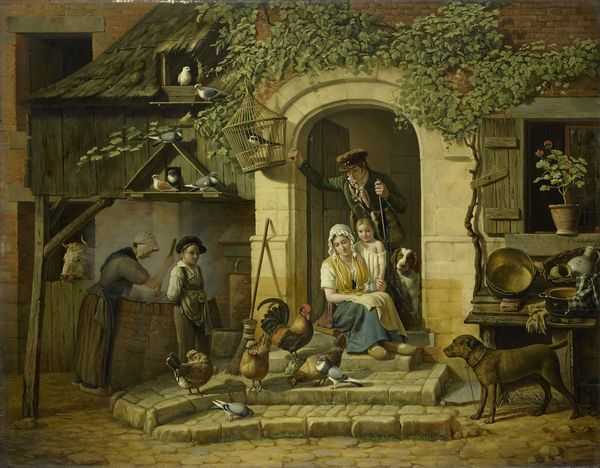
painting, oil-paint
#
narrative-art
#
baroque
#
painting
#
oil-paint
#
group-portraits
#
genre-painting
Copyright: Public Domain: Artvee
Curator: Jan Steen's "Merrymaking in a Tavern," painted around 1674 using oil on canvas, offers us such a complex scene. What strikes you most about it? Editor: It's so busy! Everyone's doing something different. It feels…chaotic, but also festive. I wonder, how do you even begin to interpret a scene so full of activity? Curator: Let's consider this through a social lens. Notice how the space seems to democratize? We have individuals from various presumed socio-economic positions gathered. However, look closer – is this really a space of equal revelry, or does Steen subtly comment on societal imbalances? Consider, for instance, how women are depicted, nurturing children. Does this reinforce gendered roles? Editor: That’s a good point. I hadn’t thought about the women as possibly symbolizing traditional roles, almost contrasting with the men. Curator: Precisely. And observe the visual hierarchy – who commands your attention, and how does that relate to their social standing, presumed or otherwise? Is the chaos a reflection of a society grappling with change and the blurring of social lines, perhaps even poking fun at societal norms and excesses? Editor: So it’s not just a fun party scene, but maybe a critique of Dutch society at the time. I guess all the small details can be interpreted as social commentary? Curator: Exactly. The ‘merrymaking’ is not just celebration. It’s a staged arena. What begins as seemingly simple genre-painting holds much richer readings concerning the function of individuals and genders that perpetuate, negotiate, and defy the prescribed identities in 17th Century Netherlands. Editor: This makes me see the whole painting differently. I came in thinking, "fun party!" but now I see the layers of meaning Steen has embedded within. Curator: Which makes you understand how art history connects to contemporary discussions, right? It lets us see echoes of the present within the past.
Comments
No comments
Be the first to comment and join the conversation on the ultimate creative platform.
